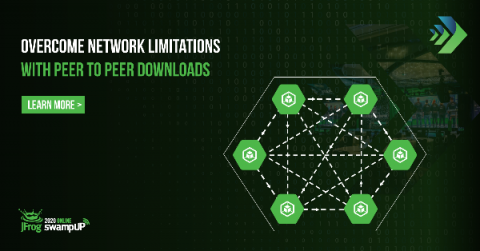Operations | Monitoring | ITSM | DevOps | Cloud
Latest Posts
Intel vPro Platform-Based Devices with Intel Endpoint Management Assistant Now Integrates with Ivanti Neurons Platform in Strategic Partnership
We at Ivanti are thrilled to announce our new strategic partnership with Intel. Offering Device-as-a-Service with self-healing capabilities for the next generation workforce, Intel® Endpoint Management Assistant (Intel® EMA) now integrates with the Ivanti Neurons hyper-automation platform. This partnership enables IT organizations to self-heal and self-secure with Intel vPro® platform-based devices—both inside and outside of the corporate firewall.
Kubernetes RBAC 101: Authentication
In part one of this series on Kubernetes RBAC, we introduced authentication and authorization methods. In this article, we’ll dive a little deeper into authentication — a prerequisite for RBAC. As we saw, there are a few authentication methods including client certificates, bearer tokens, HTTP basic auth, auth proxy, and impersonation. Because HTTP basic auth and statically configured bearer tokens are considered insecure, we won’t cover them here.
Rein in Your Incidents: Incidents and Alerts Foundations
Solving incidents is hard. Depending on your current situation, you may also be losing a lot of time figuring out what notifications constitute an incident. This results in more and more lost time as every notification must be triaged as a potential incident before you can proceed to move to resolve or disregard (as a non-incident). All this may sound very cumbersome, but the fastest way to improve is to learn and define what incidents are. And you’re in luck!
HoneyByte: Get a Taste for Sampling
Honeycomb’s event-based pricing model is pretty simple: we only care about how many events you send. For teams running workloads at scale, the question becomes: are all of my events worth keeping? How can you reduce overall event volume while maintaining fidelity? This HoneyByte is all about sampling strategies you can use to lower costs without sacrificing the value of your data.
Upgrading the Elastic Stack: Planning for success
"Upgrade" can be a four-letter word for admins, so at Elastic, we try to make the upgrade process as simple as possible. Why? Because we pack a ton of goodness into each release, but you can only take advantage of that goodness by being on the latest version of the Elastic Stack. This is also why we make the latest version available on Elastic Cloud the same day that we release.
NOC vs SOC: Which is more important?
Your enterprise likely has a network operations center (NOC) and a security operations center (SOC), both of which play an important role in your day-to-day operations. But, what differentiates your NOC from your SOC? To find out, let’s answer some of the key questions surrounding NOC vs.SOC.
On-Call Scheduling: Building a Winning On-Call Schedule for Your Team
On-call scheduling enables 24/7/365 availability of service providers for critical issues like system downtime, technician response for critical systems, and patient care. Learn about the importance of on-call schedules for your organization and its customers, how to design an on-call schedule, and multiple ways you can build an on-call scheduling program that will improve customer response and make staff happier.
Announcing new Sumo Logic dashboards
Exploring the Key Aspects of Open Source Website Monitoring
Often, brands are unaware of how their website is performing or exactly when it goes down. Technical glitches are common in today’s ever-evolving cyber world and websites can become temporarily dysfunctional due to several reasons. But from a business perspective, downtime of even a few minutes can translate into huge losses for your enterprise. Your website is one of the most important elements of your business and you should be aware of its status at all times.











